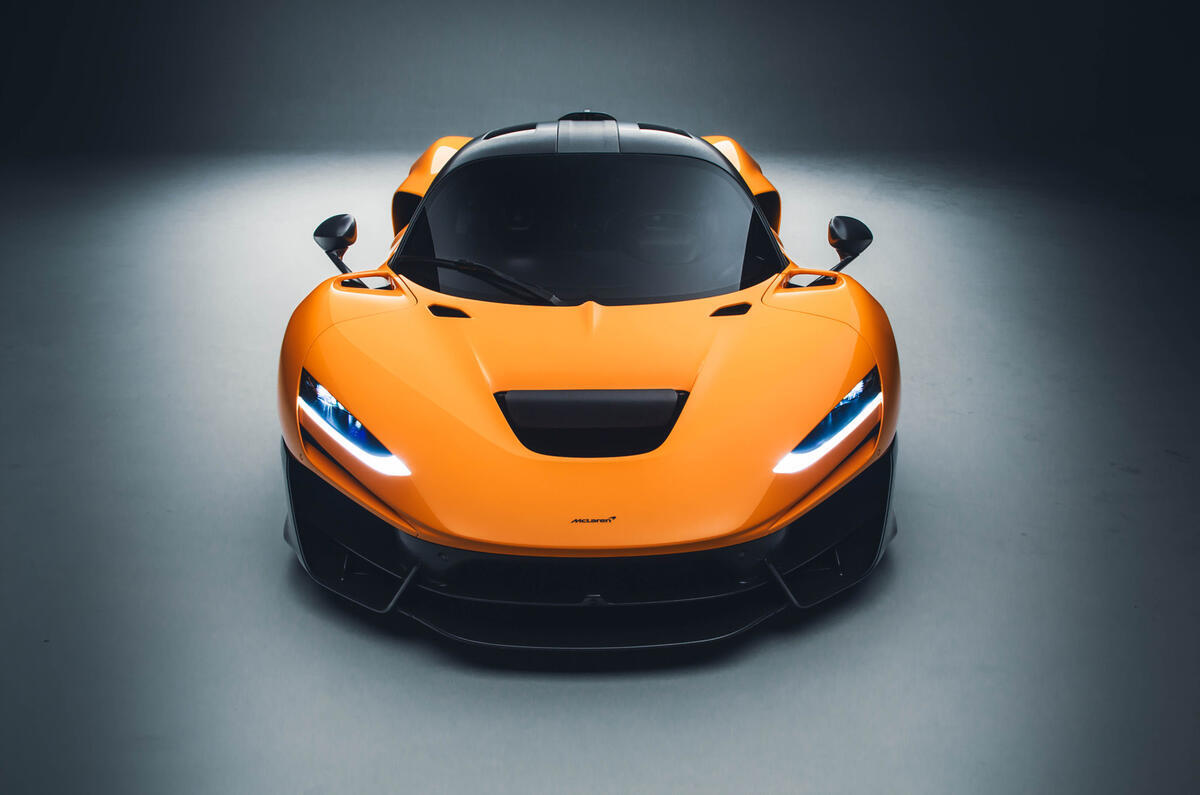The new McLaren W1 hypercar will not chase “Top Trumps numbers” but instead prioritise driver engagement and tractability in the real world.
Although its 4.0-litre turbocharged V8 engine and electric motor combine for a bombastic 1258bhp, it's electronically limited to a top speed of 217mph.
This figure matches the W1’s predecessor, the P1. It's also 23mph short of the number clocked by the 1992 McLaren F1, which was the world’s fastest road car for more than a decade – with half the W1’s power.
Asked by Autocar why McLaren decided not to chase a new speed record, W1 vehicle line director Alex Gibson explained: “Ultimate top speed – Top Trumps – is not a number that we’re chasing with this product.
"To go to 400kph, 450kph [249mph, 280mph], there are compromises you have to make for real-world accessible driving on the road and track. Those were avenues we didn’t want to pursue with this product.
“We didn’t want to get into really stiff sidewalls on the tyres, because then you compromise ride comfort on your day-to-day drives, which is the most accessible time. Most of the time this car will be used will be your point-to-point driving experience.”
McLaren’s head of performance, Marcus Waite, suggested the top speed was limited because the W1 “needs to retain a certain harmony”.
“It’s got so many roles to play: to be a car that can accelerate faster than a Speedtail, that can be faster around a track than a Senna,” he said. “We had to find a place that the car settled well.
"When we reflect on the choices that we can make, one of them is about how much cornering potential we keep in the car, and we’re clearly trading that. Even with our super-low-drag underfloor-generated ground-effect downforce, there’s still some drag under the car. It could push on a bit past 350kph [217mph] but actually, for the way we’ve designed the car to be used, that’s the right place for us now.”
To that end, McLaren made several key decisions to improve the W1's tractability and overall driver engagement on the open road.
Key to this is the decision to send the car’s huge power reserves through the rear wheels alone, rather than employing a four-wheel drive system for greater traction.
This decision was made to preserve the steering feel for which McLaren’s previous models have received much praise, said Waite; its hydraulic power assistance would not have fit in the car had a driveline to the front wheels or an extra electric motor been added.








Join the debate
Add your comment
Zero 100 somewhere in the 3 sec. range probably -- traction limited despite immense power. However the power probably means, the car continues accelerating very strongly through-out its entire speed-range, probably still doing so -- approaching 200 miles. It probably has very very fast zero to 200km. or 122 miles acceleration time.
And your point?, quoting stats is just that, personally, I'm glad to see a car maker who sees how it drives rather than chasing pointless top speeds and not being public road friendly.